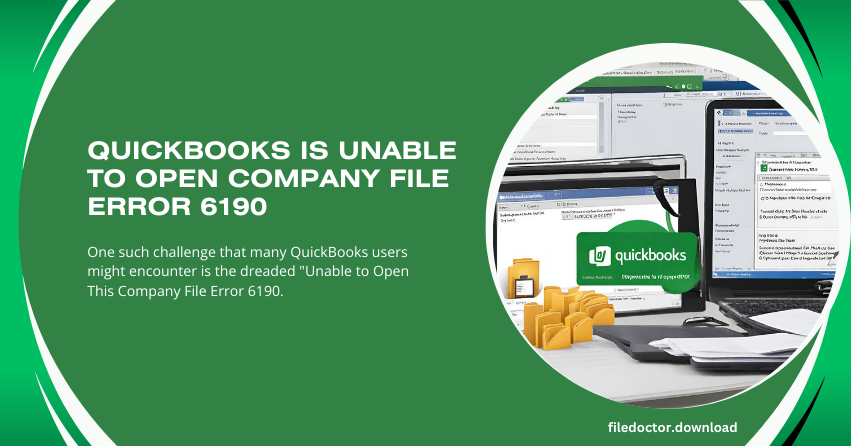
Navigating the intricate world of financial software can sometimes be as challenging as steering a ship through stormy seas. One such challenge that many QuickBooks users might encounter is the dreaded “Unable to Open This Company File Error 6190.”
Understanding Error 6190
At its core, Error 6190 arises when QuickBooks attempts to access a company file but finds it locked or in use by another application. This can be particularly perplexing and frustrating, especially when you’re on a tight deadline or trying to reconcile your accounts.
Why does this happen?
- File In Use: Another user is editing the company file in single-user mode.
- Mismatch: There’s a discrepancy between the company file (.qbw) and the transaction log file (.tlg).
- Corruption: The dreaded file corruption, a specter that haunts all digital data.
Sailing Towards Solutions
Fear not, for every problem has a solution, and Error 6190 is no exception. Let’s chart the course towards resolution:
- Employ the QuickBooks File Doctor
QuickBooks File Doctor is like a seasoned sea captain, adept at navigating treacherous errors. This tool can automatically diagnose and fix many common issues, including Error 6190.
- Step 1: Download and install QuickBooks Tool Hub.
- Step 2: Run QuickBooks File Doctor.
- Step 3: Let the tool scan, diagnose, and fix the issues.
- Dive into Single-User Mode
Sometimes, the simplest solutions are the most effective. Ensure no other users are in the company file, especially in single-user mode.
- Step 1: Ask all users to log out of QuickBooks.
- Step 2: Restart the computers to ensure a fresh connection.
- Step 3: Attempt to open the company file again.
- Renaming the .ND and .TLG Files
Think of .ND and .TLG files as the compass and map of QuickBooks. Sometimes, they need a reset.
- Step 1: Navigate to your QuickBooks company file location.
- Step 2: Look for files with the same name as your company file but with .ND and .TLG extensions.
- Step 3: Right-click and rename these files, adding .OLD at the end.
- Verify the Host Mode
In a multi-user setup, only one computer (the host) should be managing the company files. Ensure that only the host computer has the hosting mode enabled.
- Step 1: On each workstation, open QuickBooks and go to File > Utilities.
- Step 2: If you see “Host Multi-User Access,” don’t select it. This means hosting is off, which is correct for workstations.
- Step 3: On the host computer, ensure “Host Multi-User Access” is selected.
- The Path to File Recovery
When all else fails, restoring a backup of your company file might be the key to unlocking the door barred by Error 6190.
- Step 1: Locate a recent backup of your company file (.qbb file).
- Step 2: Use QuickBooks to restore this backup.
- Step 3: Check if the restored file opens without the error.
Charting a Smooth Course Forward
Prevention is always better than cure. Here are some tips to help you avoid encountering Error 6190 in the future:
- Regular Backups: Like keeping a detailed logbook on a voyage, regular backups can be a lifesaver.
- Update Regularly: Keep QuickBooks updated to ensure you have the latest features and security fixes.
- User Management: Properly manage user access and ensure that files are not unnecessarily opened in single-user mode.
In Summary
Error 6190 can be a formidable adversary, but it can be overcome with the right tools and knowledge. Whether employing the QuickBooks File Doctor, ensuring proper user modes, or even restoring from a backup, there are multiple pathways to resolution.

